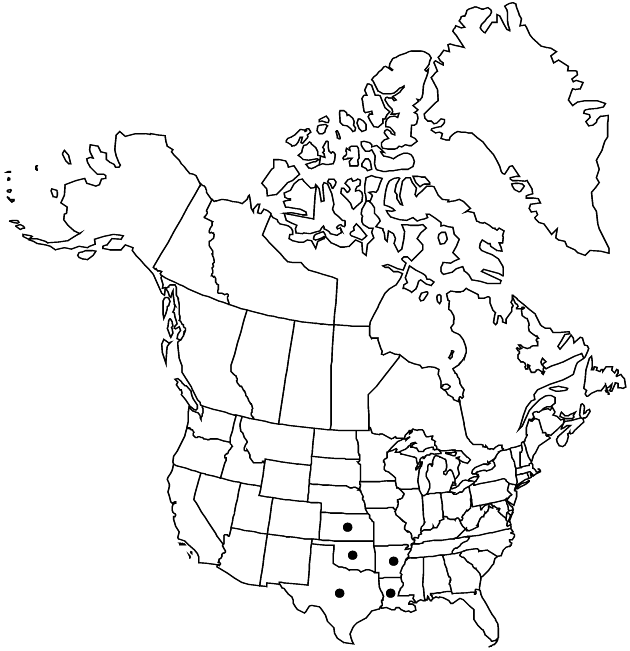Packera tampicana
Kew Bull. 47: 101. 1992.
Annuals, 20–50+ cm; taprooted (caudices ascending to erect). Stems 1 or 2–6+, clustered (bases cyanic), glabrous or leaf-axils sparsely tomentose. Basal leaves (and proximal cauline) petiolate; blades oblanceolate to spatulate (usually pinnately lobed, lateral lobes 1–6+ pairs, their bases petioluliform, terminal lobes usually larger than laterals, often reniform to ± orbiculate, midribs sometimes ± winged and/or toothed between the primary lobes), 40–120+ × 10–30+ mm, bases ± cuneate, ultimate margins subentire or irregularly crenate, dentate, or lobed. Cauline leaves gradually reduced (± petiolate or sessile, clasping; often auriculate, pinnately dissected to pinnately lobed). Heads 4–25+ in corymbiform arrays. Peduncles bracteate, glabrous. Calyculi inconspicuous or 0. Phyllaries 13 or 21, green (tips sometimes reddish), 3–7 mm, glabrous. Ray-florets 8 or 13; corolla laminae 3–7 mm. Disc-florets 30–45 (–100+); corolla-tubes 1.5–2.5 mm, limbs (1.5–) 2.5–3.5 mm. Cypselae 1–1.5 mm, hirtellous on ribs; pappi 3–5 mm. 2n = 46.
Phenology: Flowering Feb–Jun.
Habitat: Disturbed, wet, sandy or clay sites, roadsides, stream banks, waste areas
Elevation: 0–1000 m
Distribution

Ark., Kans., La., Okla., Tex., Mexico
Discussion
Packera tampicana is fairly widespread along the Gulf Coastal Plain and north and in Mexico. Morphologically, P. tampicana most closely resembles P. glabella; the former grows in very wet, sandy or clay soils and open sunlight, the latter grows in drier habitats, usually in partial shade.
Selected References
None.